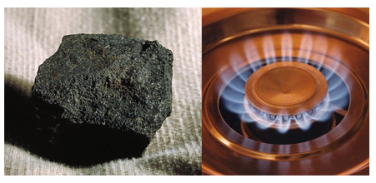
The Houston company has formed a joint venture with Alaska’s Cook Inlet Region (CIRI) that will pump out syngas (the result of the coal gasification process) at a commercial scale. Underground coal gasification (UCG) not only allows companies to tap into coal resources that are too deep to mine, it also generates a diversity of products, from fuel for heating and electricity, to automotive fuels, says Laurus CEO Rebecca McDonald.
[aditude-amp id="flyingcarpet" targeting='{"env":"staging","page_type":"article","post_id":189097,"post_type":"story","post_chan":"none","tags":null,"ai":false,"category":"none","all_categories":"business,enterprise,","session":"D"}']With UCG, Laurus is able to access coal located more than 100 meters under the earth. Oxidants are pumped down into these coal seams causing combustion underground, which releases gas. This product is combined with hydrogen and methane, and carbon dioxide is removed much more easily than it is from coal burned above ground.
“There’s a lot of coal in North America, but most people don’t know that there’s probably five to seven times the amount of coal that you can mine,” says McDonald. “That’s 1.7 trillion metric tons of coal that can be tapped using this technology cleanly, abundantly and at a low cost.”
AI Weekly
The must-read newsletter for AI and Big Data industry written by Khari Johnson, Kyle Wiggers, and Seth Colaner.
Included with VentureBeat Insider and VentureBeat VIP memberships.
Once the synthesis gas is made, it can be used in the same pipelines and boilers that currently use natural gas, meaning there’s no need to upgrade or swap out legacy technology (saving even more money). When the carbon dioxide is pulled out of the syngas, it can be used to make transportation fuels and diesel that can be used in standard automotive and jet tanks.
In addition to the new development outside Anchorage, Alaska, Laurus has a project in Alberta, Canada, just outside of Edmonton. The company is waiting for its final permits to do a calibration burn underground — the last step before it can start producing syngas at scale. When this is complete, Laurus will be the first company to produce commercial quantities of syngas on the continent.
If all of this falls into place, the syngas could be slightly less costly than natural gas, at $2 to $3 per 1 million British Thermal Units (1 BTU is the amount of energy needed to heat one pound of water by 1 degree Fahrenheit).
The way McDonald sees it, the U.S. only has two options for reasonably priced, faster, cleaner power: nuclear and underground coal gasification. And the latter is much more likely to take shape, she says.
“I don’t think the country has the appetite for nuclear right now,” she says. “We still don’t know how to dispose of it, and the time frame for bringing that along is 15 to 20 years out. The time frame for UCG is one to three years out.”
She warns that UCG is not to be hastily compared to other clean coal technologies, which include capturing and sequestering the greenhouse gases before or after they are released from coal-fired power plant smoke stacks. This is much more expensive and difficult to implement, McDonald says, and the result isn’t nearly as environmentally friendly as it is with UCG.
[aditude-amp id="medium1" targeting='{"env":"staging","page_type":"article","post_id":189097,"post_type":"story","post_chan":"none","tags":null,"ai":false,"category":"none","all_categories":"business,enterprise,","session":"D"}']
“Yes, it is made from coal, but there is no mining, no ash, no slag, no disruption of the earth’s surface, and you aren’t burning the coal in a smokestack,” McDonald says. “When most people think about or criticize clean coal, they are thinking about something else entirely.”
Also helping Laurus avoid the typical hordes of clean coal opponents is the fact that it’s not requesting any money from the U.S. government to develop its technology, unlike many renewable energy companies. Because the cost of its developments and equipment is so low, and the price point is already so competitive with natural gas, it won’t require ongoing federal subsidies.
That said, it has raised a fair bit of private capital, primarily from Mohr Davidow Ventures. The firm first invested in the company in 2007. Now it’s gearing up for a second round of fundraising, although an amount hasn’t been disclosed.
McDonald hopes that this second round will be enough to carry the company into profitability, with both UCG sites in Alaska and Canada up and running. This would be a big step for North America in this area, which has been trailing far behind Russia and neighboring countries like Uzbekistan — all of which have been using the process since the 1940s.
[aditude-amp id="medium2" targeting='{"env":"staging","page_type":"article","post_id":189097,"post_type":"story","post_chan":"none","tags":null,"ai":false,"category":"none","all_categories":"business,enterprise,","session":"D"}']
VentureBeat's mission is to be a digital town square for technical decision-makers to gain knowledge about transformative enterprise technology and transact. Learn More
